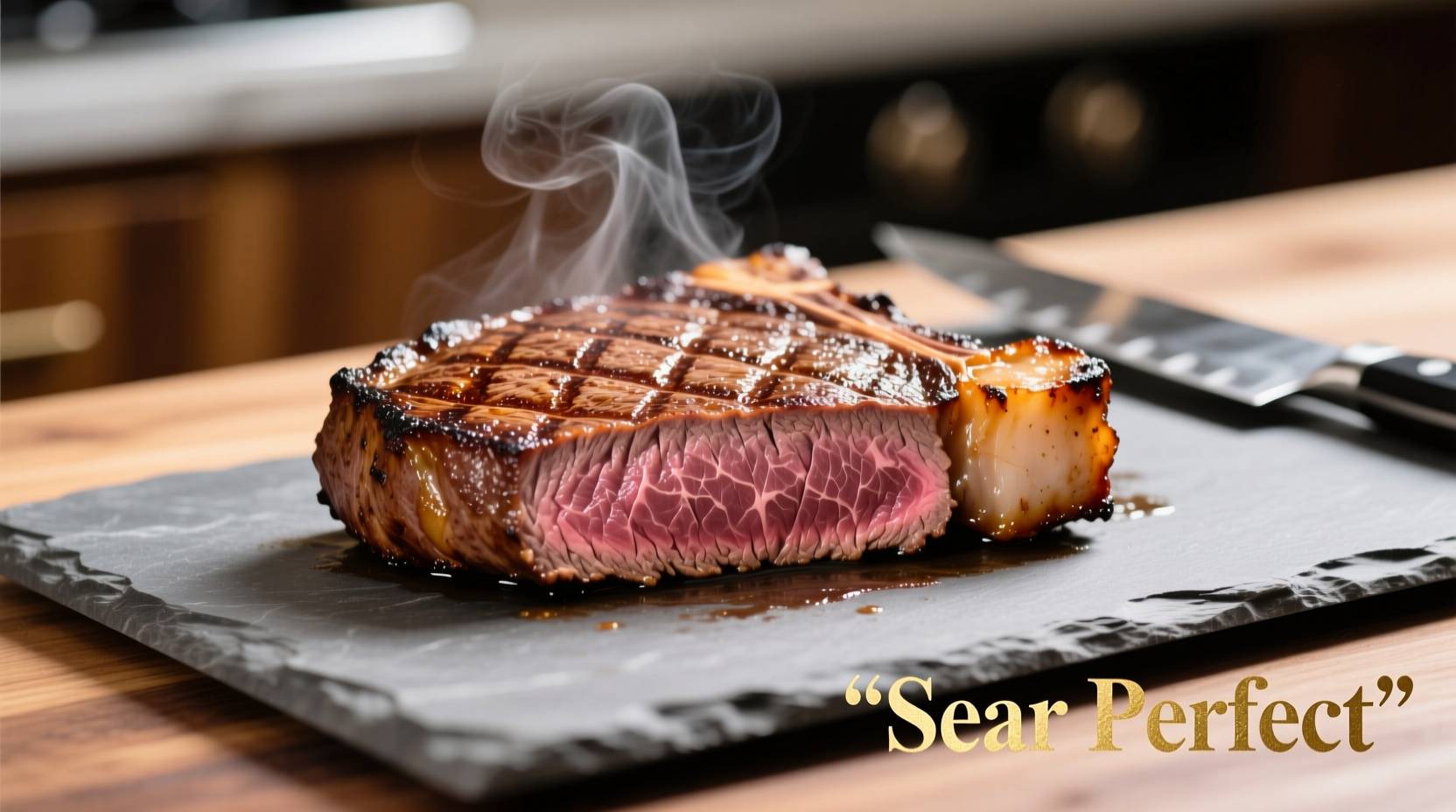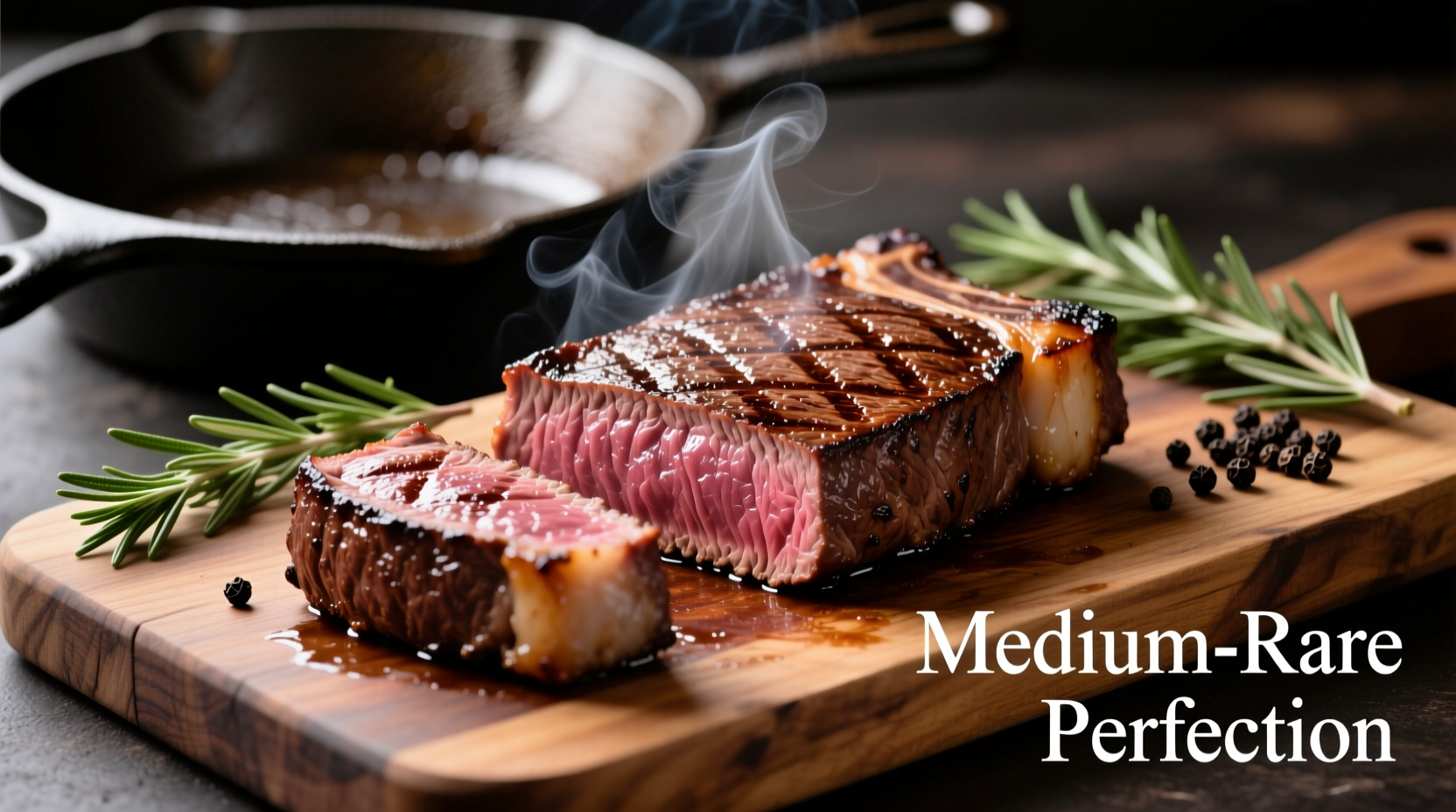The Ultimate Guide to Cooking Beef Tenderloin Steak
Beef tenderloin steak, often called filet mignon when cut into portions, represents one of the most prized cuts in the culinary world. This exceptionally tender cut comes from the psoas major muscle along the cow's spine, which does minimal work, resulting in remarkably soft texture. However, its leanness makes proper cooking technique essential—too much heat and you'll end up with dry, tough meat instead of the melt-in-your-mouth experience you deserve.
Why Tenderloin Demands Special Attention
Tenderloin contains minimal fat marbling compared to ribeye or strip steak, giving it delicate flavor but requiring precise temperature control. Unlike fattier cuts that forgive slight overcooking, tenderloin's low fat content means it can become dry and tough within seconds of passing your target doneness. Understanding the science behind meat proteins helps explain why:
| Doneness Level | Internal Temperature | Visual Characteristics |
|---|---|---|
| Rare | 120-125°F (49-52°C) | Bright red center, soft texture |
| Medium Rare | 130-135°F (54-57°C) | Warm red center, slightly springy |
| Medium | 140-145°F (60-63°C) | Pink center, firm but yielding |
| Medium Well | 150-155°F (66-68°C) | Slightly pink center, quite firm |
| Well Done | 160°F+ (71°C+) | Little to no pink, very firm |
Selecting Your Beef Tenderloin Steak
Quality begins at purchase. Look for:
- Color: Vibrant cherry red (avoid brown or gray hues)
- Marbling: While tenderloin is naturally lean, some fine white fat streaks indicate better flavor potential
- Thickness: 1.5-2 inches ideal for proper sear without overcooking
- Grade: USDA Prime offers best marbling, but Choice works well with proper technique
According to the USDA Food Safety and Inspection Service, proper handling begins with purchasing from refrigerated display cases below 40°F. Always check the "sell-by" date and transport home promptly to maintain food safety (USDA.gov).
Pre-Cooking Preparation: The Critical Steps
Skip these steps and your tenderloin won't reach its potential:
- Temperature Equalization: Remove steak from refrigerator 60-90 minutes before cooking. Cooking cold meat creates uneven doneness.
- Silver Skin Removal: Use a sharp boning knife to carefully slice away the tough connective tissue on one side. This prevents curling during cooking.
- Drying: Pat thoroughly with paper towels. Moisture prevents proper searing.
- Seasoning: Generously apply coarse salt and freshly ground black pepper. For enhanced flavor, add garlic powder and thyme.

The Professional Cooking Method: Pan Sear + Oven Finish
This two-stage technique delivers consistent results that home cooks can replicate:
Equipment Needed
- Cast iron or heavy-bottomed stainless steel skillet
- Oven-safe meat thermometer
- Tongs
- Aluminum foil
Step-by-Step Instructions
- Preheat oven to 400°F (204°C)
- Heat skillet over medium-high heat until smoking slightly (about 5 minutes)
- Add high-smoke point oil (avocado or grapeseed) to coat bottom
- Sear steak for 3-4 minutes until deep golden crust forms
- Flip and sear opposite side for 3-4 minutes
- Add aromatics: Tilt pan and add 2 tbsp butter, 2 crushed garlic cloves, and fresh thyme sprigs
- Baste continuously for 1 minute using spoon
- Transfer skillet to oven and cook until internal temperature reaches 125°F (52°C) for medium-rare
- Remove and rest on cutting board, loosely tented with foil, for 10 minutes
This method leverages the Maillard reaction—the chemical process where amino acids and sugars create complex flavors and appealing brown crust. Research from the Culinary Institute of America confirms that temperatures between 285°F and 325°F optimize this reaction without burning the meat.
Why Resting Time Matters
Resting isn't optional—it's essential science. When meat cooks, muscle fibers contract and push juices toward the center. Resting allows:
- Temperature equalization throughout the steak
- Protein fibers to relax and reabsorb juices
- Carryover cooking to complete the process (temperature rises 5-10°F)
Cutting too soon releases precious juices onto your cutting board instead of staying in the meat. The American Meat Science Association recommends resting time equal to half the cooking time—approximately 10 minutes for standard tenderloin steaks.
Troubleshooting Common Problems
Problem: Steak is gray instead of brown
Solution: Your pan wasn't hot enough. Proper searing requires smoking-hot surface. Next time, heat pan longer and ensure steak is completely dry.
Problem: Uneven cooking with raw center
Solution: Steak was too thick or cold when started. Try butterflying thicker cuts or extend room temperature time.
Problem: Dry, tough texture
Solution: Overcooked or insufficient resting time. Use thermometer and never skip resting period. Remember: carryover cooking continues after removal from heat.
Serving Your Perfect Tenderloin
Slice against the grain at 45-degree angle for maximum tenderness. Serve with complementary sides like:
- Truffle mashed potatoes
- Roasted asparagus with lemon zest
- Red wine reduction sauce
- Crispy shallots
Pair with medium-bodied red wines like Pinot Noir or Merlot that won't overpower the delicate beef flavor.
Advanced Techniques for Special Occasions
For special dinners, consider these professional enhancements:
- Compound butter: Mix softened butter with minced herbs, garlic, and lemon zest; place on hot steak during resting
- Dry aging: Age whole tenderloin in controlled environment for 21-45 days to concentrate flavor (requires special equipment)
- Herb crust: Press steak into mixture of crushed peppercorns, thyme, and rosemary before searing
Frequently Asked Questions
How long should I cook a 2-inch thick beef tenderloin steak?
For medium-rare, sear 3-4 minutes per side in skillet then finish in 400°F oven for 6-8 minutes. Total cooking time typically 15-20 minutes, but always verify with thermometer (125-130°F). Remember carryover cooking will raise temperature 5-10°F during resting.
Can I cook beef tenderloin on the grill?
Yes, use two-zone grilling: sear over direct high heat for 3-4 minutes per side, then move to indirect heat until reaching target internal temperature. Maintain grill temperature around 375-400°F for best results. Use a thermometer to prevent overcooking.
Why is my beef tenderloin tough despite careful cooking?
Toughness usually indicates overcooking or insufficient resting. Tenderloin's low fat content means it dries out quickly past medium-rare. Also verify you removed the silver skin properly, as this connective tissue remains tough when cooked. Always use a thermometer and rest minimum 10 minutes.
What's the difference between beef tenderloin and filet mignon?
Beef tenderloin refers to the entire cut (typically 2-3 feet long), while filet mignon specifically describes the tapered end portion cut into individual steaks. Both come from the same muscle, but filet mignon steaks are usually more uniform in shape and size.
Should I marinate beef tenderloin before cooking?
Marinating isn't necessary for tenderloin since it's already tender, but a simple herb and garlic oil marinade for 2-4 hours can enhance flavor. Avoid acidic marinades as they can make the surface mushy. For best results, simple salt and pepper seasoning before cooking yields excellent results.











 浙公网安备
33010002000092号
浙公网安备
33010002000092号 浙B2-20120091-4
浙B2-20120091-4